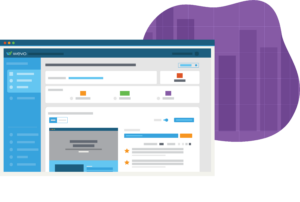Contents
- 1 The User Research Demand, Democratization of Insights, AI, Data Privacy, and Continuous Discovery
The User Research Demand, Democratization of Insights, AI, Data Privacy, and Continuous Discovery
User insights have become a valuable commodity for businesses in recent years. By understanding how users interact with their products, companies can improve design, functionality, and messaging. To obtain these user insights, businesses are turning to a variety of methods such as surveys, interviews, focus groups, and observational studies, collectively known as user experience research, or UX research.
User experience research is the practice of understanding how users interact with products and services. By conducting research among target users, UX professionals can collect feedback that companies can use to improve their product and service designs. Through user interviews, task analysis, and other forms of research, UX professionals can gain an understanding of how users think, what they need or want, and how they interact with products and interfaces. The goal is to create a more user-friendly experience that meets the needs of the customers.
UX Research Has a Seat at the Executive Table
User research has been proven valuable for businesses. By knowing how their customers interact with their products or services, they can improve their products or services accordingly, and eventually increase sales. UX research also helps businesses identify opportunities for improving customer service. This can lead to increased customer satisfaction. It may also encourage customers to recommend the product or service to others. Ultimately, UX research potentially leads to a strong ROI, especially when its results are properly maximized.
User experience research was rarely prioritized years ago. Fortunately, demand for UX researchers is now increasing and is expected to reach 14% in the next ten years. Businesses realize that customer lifetime value (CLV) is driving demand for better customer experiences, which can only be gauged through UX research.
Organizations typically go through three stages of next-generation user experience research. Depending on which stage a company’s researchers are at, they will be classified as UX evangelists, intermediate advancers, or transformative leaders.
Stage 1: UX Evangelists
UX evangelists are the first and few UX researchers who try to promote its benefits throughout the company. They often try several research methods for their testing and analysis, and early success makes their work gather steam.
Stage 2: Intermediate Advancers
Intermediate advancers are those who have succeeded in their early UX research and are exploring more strategies to resolve other problems and validate their research for better solutions.
Stage 3: Transformative Leaders
Transformative leaders are the researchers who have fully adopted UX research as part of their business philosophy and vision. Their company may have also expanded UX research in various departments.
User Research Is Not Just for Researchers
Democratization of research has paved the way for the expansion of the value of research across different departments in companies. Fortunately, the growth of online platforms that allow people to contribute information has also provided businesses with access to a wider range of data.
This shift towards using UX research is changing the way businesses operate. It is now easier for businesses to get feedback from their customers and solicit contributions from a wider demographic. This allows businesses to make better decisions faster.
However, it’s also creating some unexpected results. Since UX research is still growing, there are not many UX professionals who could do generative research, which is research focusing on discovery and exploration. Companies need to have professionals who have the knowledge and expertise in gathering the right data and gleaning the proper information.
This has prompted businesses to be resourceful. Many companies agree that evaluative research can be given to non-professionals, as long as there is ample guidance and training. Their work will prove helpful, especially if companies standardize the evaluation criteria. UX research has the potential to be open to everyone if the tools used help provide reliable insights.
Artificial Intelligence in User Research
With more and more data being generated every day, it is becoming increasingly difficult to keep track of all the data and ensure its accuracy. This is where AI comes in. With its ability to quickly and accurately identify and correct errors in data, AI can play a crucial role in data cleansing.
By automating the process of identifying and correcting errors, AI helps businesses cleanse their data quickly and efficiently, ensuring that the data is accurate and up-to-date. Ultimately, the role of artificial intelligence in data cleansing is becoming more and more important, as it gives researchers the time to do what they do best: analyze data and make decisions.
In an ideal scenario, AI does the heavy lifting, and platforms like WEVO gather and analyze the data from tests and responses. This enables companies to organize and filter the results, allowing them to see the bigger picture and make appropriate decisions.
Balance Between Privacy and Advocacy
To ensure the security and validity of UX research, businesses also strive to strike a balance between privacy and advocacy. Aware that some people may be worried about how data gathered online can be used for questionable purposes, companies are exploring how certain measurements or metrics could be sifted to address these concerns.
The European Union’s General Data Protection Regulation (GDPR) requires companies to follow these four principles:
- Only collect the essential information they need
- Ensure that user data is stored and processed securely using third-party security tools
- Get informed consent for all data gathering and processing
- Allow users to control which data they share
To complement this, UX researchers should design research methods that advocate for users’ privacy while still being able to gather necessary information. The future of UX research could depend on how they meet GDPR’s principles.
Continuous Discovery
Continuous discovery is a methodology for managing change that enables an organization to identify and respond to opportunities and threats as they emerge. It is also known as “continuous learning” or “dynamic learning.” The key idea behind this is that organizations should constantly scan their environment for changes, and then take action to capitalize on the opportunities or address threats.
The continuous discovery methodology has three essential elements:
- Continuous scanning of the environment for changes
- Rapid response to changes
- Learning from successes and failures
Product design teams and UX researchers are now using this methodology to refine their strategies. Following it could result in better customer experiences, which lead to happier customers and a higher ROI for companies.
UX Research Is Transforming Industries
Many businesses now see the value of customer experience in their branding, marketing, and even ROI. Expanding user experience research efforts and maximizing UX research trends can help companies achieve their goals, but they should understand how to balance data privacy and their goals of providing better services or products. UX research is here to stay, but it is up to the companies to ensure that the data is gathered properly and securely.
User research is becoming more prominent across teams, but the tension between allowing more access to gathering and delivering insights with integrity is greater than ever. The battle of whether democratization of insights is good or evil will continue to be a trend in the near future as organizations work to find their footing in adopting insights more effectively.



